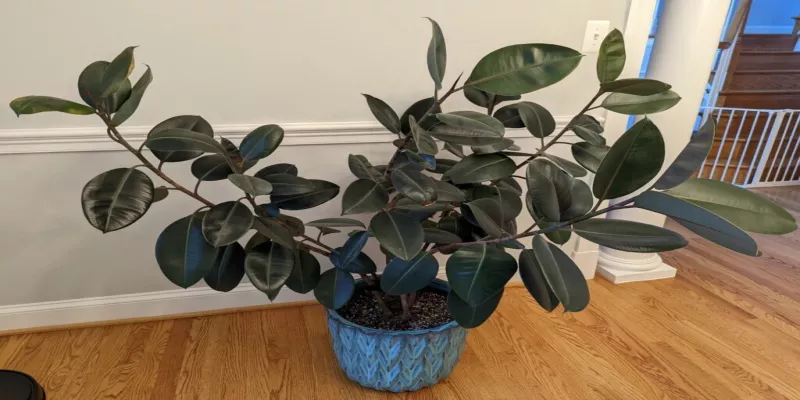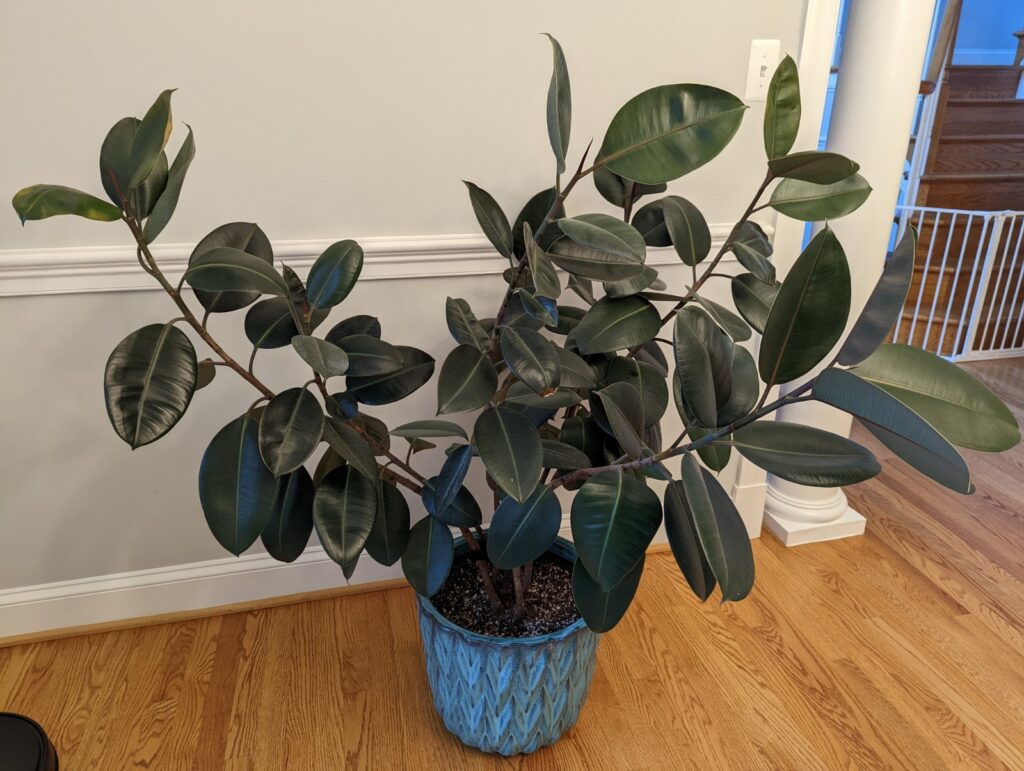The Best Rubber Plant Pot

I've owned Rubber Plants for many years. Over those years I have done several repottings with different types of pots so I thought it would be a good idea to share what I have learned. There are a few factors that matter when selecting the right pot such as drainage, pot size, and pot material. I'll discuss all three in this post.

Drainage
If you're already into plants, you already know this but selecting a pot with drainage holes is a must. If water is not allowed to flow freely out of the bottom of the pot then it will pool in the bottom of the pot. Water that has collected in the bottom of the pot will not be able to evaporate very well. If the water sits in the bottom of the pot for too long it may affect the roots of your plant causing root rot. Root rot is detrimental to you your plant's health. Some signs of root rot are limp leaves and brown spots on the leaves. In addition, fungus gnats are attracted to oversaturated soil so if you have them that could be a sign you're watering too much or your pot doesn't have enough drainage.
Part of the fun of having plants is picking out fun pots. If you do find a pot that you like, but it doesn't have drainage holes, you don't have to pass it up. It's possible to add drainage holes to most pots with a drill and some relatively inexpensive diamond drill bits. I have a whole post with detailed instructions on how to add drainage to ceramic and glass pots.
Rubber Plant Pot Size
Selecting the correct pot size for a Rubber Plant is also important. If a pot is too small the roots will not have much room to grow, which may mean your plant will grow more slowly. In addition, if the pot is small, that means you'll have to repot your plant more quickly. Conversely, if a plant pot is too large then the soil-to-root ratio will be too large. If there is too much soil, it can take a long time to dry out and that can mean problems for your roots, for the same reasons I explained above.
When you're repotting a Rubber Plant because it has filled out its old pot with roots, then you should select a new pot that is about two inches larger in diameter compared to the old pot. This is a common recommendation for most plants. At this size, you're providing adequate space for new fresh soil, but not too much. If you're repotting a Rubber plant but it has not filled out the old pot with its roots, then you should select a pot that is two inches in diameter larger than the root ball, not necessarily two inches bigger than the old pot.
Rubber Plant Pot Material
It's important to know that different pot materials have different properties which have advantages and disadvantages. Any of these types of pots will work for Rubber Plants but I've listed some of the pros and cons to each to help you make the best decision for you.
Plastic/Resin Pots
Plastic or resin pots are usually pretty cost-effective compared to some other pots. They can also come in a wide variety of designs. One great thing about plastic pots is that they are to most lightweight plant pot option. If you have a really big Rubber Plant, then plastic may be the way to go. Some plastic pots are hit or miss with drainage, but the great thing about plastic is you don't even need a special drill bit to drill a hole in a plastic pot. Plastic pots are not porous, so it's worth noting that water will not evaporate from the pot, it needs to flow out of the bottom. Another great thing about plastic pots is that they are not easily broken.
Terracotta Pots
Terracotta pots are also typically economical in terms of price. They're easy to find in multiple sizes at most home improvement stores. Terracotta doesn't provide much variety in terms of looks. They're mostly orange-ish brown, but I've seen them in a darker brown color as well. The shape of the pots are pretty standard as well with not much variety. These pots are very porous and will dry out fairly quickly. Terracotta pots are a bit heavier than most plastic pots. In addition, they can crack if dropped so I consider them less durable.
Ceramic Pots
Ceramic pots are typically the most expensive compared to plastic and terracotta. In my opinion, they look the best too, so you get what you pay for. Looks are subjective though. Ceramic pots are typically glazed which holds in moisture, so plants in ceramic pots most definitely need drainage to dry out between waterings. Ceramic pots can be quite heavy as well. In addition, they are fragile and will break and chip if dropped or bumped.
Pots Other Thoughts
Two other pot thoughts that are really just personal preferences or recommendations. I avoid two types of pots that I feel can keep stagnant water and thus attract fungus gnats, a plant person's mortal enemy. Steer clear of self-watering pots for this reason. I don't want water sitting anywhere in my house. I also do not buy pots with the drip tray already attached, if you ever get too much water in there, it cannot be removed and it's hard to get rid of that standing water in the bottom.
Do you have any thoughts or questions on Rubber Plant pots? Share in the comments.
Add new comment